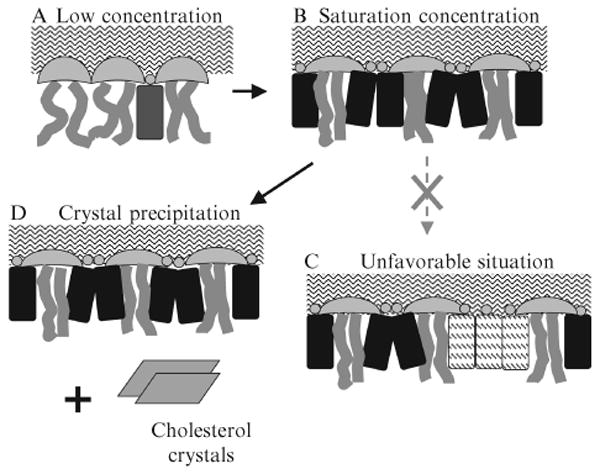Figure 12.6.

The umbrella model and the physical interpretation of cholesterol maximum solubility limit. (A) At low cholesterol concentration, headgroups of neighboring PCs easily cover the hydrophobic bodies of cholesterol. Motion of acyl chains next to cholesterol is restricted by the rigid body of cholesterol. (B) At the saturation concentration, headgroups of PCs work together to cover the maximum amount of cholesterol. The acyl chains of PCs become highly ordered. (C) If more cholesterol were added and stays in the bilayer, patches of pure cholesterol would form, and some cholesterol would be exposed to water, which is highly unfavorable. (D) To avoid forming cholesterol patches, excess cholesterol precipitate and form cholesterol crystals, and the lipid bilayer retains the maximum amount of cholesterol that can be covered.
